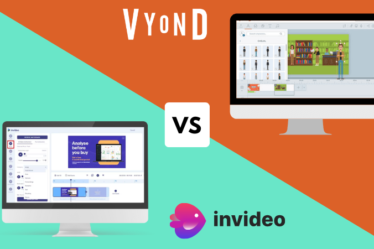
What is Marketing?
The heart of any business’ success lies in the quality of its marketing. Your business may offer the best products or services in your industry, but without excellent marketing initiatives, none of your potential customers will be aware of you. People often confuse marketing with sales, advertising or promotions. However, there is a substantial difference between these terms. Let us learn about marketing in more detail.
Today, I will take you through an introduction to marketing where you will learn all about the basics of marketing.
Say you have a long weekend ahead and you come across a post on Facebook where a friend of yours is interested in a concert taking place outside the city. At the same time, you also notice MakeMyTrip, promoting its travel packages, as a partner for the same event.
You end up booking a ticket for the concert and end up making all your hotel and travel arrangements through MakeMyTrip. This is marketing.
See how, on a regular basis, you are subconsciously interacting with the world of marketing?
From toothpaste to a mobile phone, from food and travel to clothes and cars – Everything purchased by you is in some way driven by the way Businesses & Brands capture your thoughts and present their offerings to you.
Apple is one of the richest companies in the world. Its market capitalization is greater than the GDP of many countries!
With sales of nearly 34,000 iPhones every second in 2015, this should come as no surprise at all.
But how did Apple achieve this?

Its products are amongst the most expensive in their respective categories, and yet there are customers who, for years, have been purchasing its products, replacing their old ones with new ones.
In fact, most Apple users typically own more than one type of Apple product. How did Apple manage to achieve such a high level of brand loyalty? What has it done right, that many in its category just weren’t able to do?
Apple’s success can be attributed to its marketing excellence,
- It focuses on innovative and unique products
- Superb consumer experience and
- Seamless syncing between devices. Another major reason is
- It’s brilliant and focused marketing strategies.
Take the “Mac versus PC” ad series – two guys just standing and talking, no lengthy list of product features, no mention of price, and no professional actors, not even information on how to buy a Mac.
Each ad aims to make one point and one point only: how Macs are better than PCs. You can click on the link below to see this for yourself: (https://www.youtube.com/watch?v=0eEG5LVXdKo).
In the morning, when the newspaper tempts you with a soft drinks ad, or when you’re driving to work and you hear about a discount sale on the radio, or while in a meeting you receive a call from a bank offering you a loan, or when you see beautiful watches on the TV screen in the middle of your favourite sitcom, or when a pair of great looking shoes pops up on in your email, all these are forms of marketing.
Often, “marketing”, “selling” and “advertising” are used interchangeably, but there is a substantial difference between each of these terms.
Marketing is a much broader term, while advertising and selling actually sub-functions that come under it.
Marketing deals with everything from identifying human and social needs to meeting them.
The American Marketing Association defines marketing as “the activity, set of institutions, and processes for creating, communicating, and delivering offerings that have value for customers, clients, partners, and society at large.”
If you look at this definition closely, there are 3 key activities involved in the marketing:
1. First, there’s creating offerings. This is the process of working with others to develop offerings that have value for customers.
- Then there’s communicating. This is the process of describing your offerings to customers, as well as learning from them about their needs and preferences.
3. And finally, there’s delivering. This is the process of providing your offerings to customers in ways that enhance value.
I think I have always believed that marketing has two fundamental roles in any business. One is to create demand for your products and that specifically is to get more people to choose your products over the competition.
so I think whether you do communication, whether it’s positioning and all, the other sub-disciplines of marketing, I think are kind of aligned to how do you create demand faster than your competition for your products.
so that’s one cool reason for the existence of marketing but the other reason for marketing in any organization today is to create value which is… if you are spending Rs.100 to make a product, how do you get your consumers to value which is worth Rs.200 or Rs? 300 because that’s what generates profits and that’s where a lot of things like brand equity and a lot of things.
like all the other stuff that I do is kind of geared towards creating value which is significantly more than the cost of the product because otherwise, it becomes a bit like a commodity.
I mean, the whole point about branding and marketing is, not just more people should want my product over the competition but also, they should be willing to pay a lot more than what I am paying to use my good services.
Those are the fundamental two reasons where I think marketing exists.
Scope of Marketing
Let’s try and understand the scope and importance of marketing.
- One of the most commonly marketed categories is that of goods and services. When you see an L’Oréal ad, it is typically marketing a “product”, say a shampoo. And when you come across the brochure of a car rental firm, the company is typically marketing its “services”: the convenience of renting a car.
- Another widely marketed category is events and experiences. An “event” could be a global sporting meet like the Olympics or a cricket tournament. An “experience” on the other hand could be time spent at a theme park like or an adventure sports arena that offers skydiving activities.
- Increasingly we also see the marketing of people, organizations, and places. All these categories need to be marketed actively to build a distinct image in the minds of the target market. An actor like Shahrukh Khan, an organization like IBM, a place like Kerala, all needs to be consistently promoted and marketed, whether to build and grow a fan base or create an attractive image as a place to work in, or to cultivate a steady stream of visitors.
- It is also common now to see ideas and benefits being marketed. Promoting awareness about AIDS, encouraging family planning and discouraging smoking are some ideas that need to be promoted to improve health and social wellbeing.
Hey! So the idea behind selling a product is to market it the best way. Right from mass marketing to marketing for niches.
It was great to understand the marketing strategies of Apple, right?
But is marketing really that important for a product’s success? Let’s see how
Let’s now turn to why marketing is so important for a company or indeed any organization:
- Without customers, an organization really has no purpose. Marketing starts with researching and understanding consumers. Its role is to help the company understand the needs and wants of its customers.
Let’s take the example of Apple to understand how marketing was vital to its success.
Steve jobs understood deeply that what customers wanted was a great user experience. So he focussed on delivering this relentlessly with Apple products: from the Mac to the iPod, to the iPhone and iPad.
- If a company is introducing a product into a market for the first time, then it needs to make consumers in the market aware of that product. Marketing helps create awareness for products and services.
Each time Apple introduced a new product, Steve Jobs would hold a high profile press conference to bring that product to the world.
These were eagerly awaited events and they received huge publicity making the new product instantly known to millions of people around the world.
- Once a company has created awareness for its new product, it needs to make this product available to consumers, ideally in a place near them. Marketing ensures that products are distributed and conveniently available to consumers.
Apple did this by opening its own chain of stores. Placed in attractive locations in major cities around the world, it was able to attract large numbers of customers who then drove the sales and awareness of Apple products.
- Marketing also helps establish the reputation and brand image of a company and its products. Many people wait for Apple to launch new products because they know that these will not only meet their expectations but even exceed them.
They remember how excited and delighted they were when the previous Apple product came out.
- A major aim of marketing is to maintain a long-term and healthy relationship with its customers. Apple does this through its great products, its super communication with customers, its beautiful stores, and excellent customer service, and its strong brand.
The relationship between Apple and its customers keeps strengthening with every new Apple product that it releases into the market.
From the customer’s perspective, marketing helps them become aware of the products and services available in the marketplace.
It helps them get detailed information about various aspects of the product/service such as its price, its features, its availability etc.
This, in turn, helps customers evaluate the various alternatives available and make good decisions when purchasing products and services to meet their basic and higher order needs.
What are various functions of marketing?
Within a business, all marketing decisions are affected by other business functions. Equally, other business decisions and the firm’s overall corporate strategy are strongly influenced by a variety of marketing considerations and inputs.
Let’s understand some of the links between marketing and the firm’s other business functions.
The sale is a fundamental function within any business. It works to literally sell the company’s products and services and generate revenues.

Thus the sales function needs to be closely aligned with the marketing function. Marketing and finance rely greatly on each other.
Without the right funds at the right time, the marketing function cannot meet the expenses involved with executing marketing actions well and in a timely manner.
The number and types of products that the firm is making determine what and how many products the marketing function can promote and distribute to customers.
This aspect of production and distribution can work smoothly only if the marketing and operations functions of a firm work closely and communicate well with each other. Often marketing involves interaction between the firm’s people such as its salespeople or service personnel and customers.
For this process to go smoothly it is important for a firm to hire the right people and train them to be even better in doing their jobs and serving customers. Hence, marketing and the human resources function and interdependent and must work closely together.
So the biggest skill gap I see in the current breed of digital marketers is they completely lack business understanding. What they should understand is digital is a way to achieve an objective, the objective being business goals.
It could be customer satisfaction, it could be increased in sales, it could be gain in market share, I would strongly recommend upcoming digital marketers to understand the industry context in which they are operating.
They could be working in an insurance firm or a travel firm or an IT firm, the first step actually understands the business.
The second skill gap which I see is, most digital marketers today don’t understand marketing technology, If you don’t understand marketing technology and you only are a specialist in search engine optimisation or social media you really won’t understand concepts like a single view of the customer and your campaigns won’t be able to use a lot of interesting technology elements which are in play today.
The ultimate aim of marketing is to ensure an exchange of goods and services between producers and consumers in a way that maximizes satisfaction to consumers and leads to better recommendations, repeats, and reviews. To achieve this aim, there are many marketing functions involved.
- The first function is market research. Market research focuses on gathering and analyzing information pertaining to customers.
- Who are the people you want to sell to?
- What are their needs and preferences?
- Where do they shop and
- How much are they willing to pay?
- Would they buy from you as opposed to a rival business?
Answering these questions requires you to do extensively on the ground research on consumers, prevailing market trends, and competing products.
McDonald’s, for instance, routinely conducts market research to identify the needs of the different categories of customers it caters to. Based on this research it knows that parents go to McDonald’s with their children because this makes their children happy.

Children go to McDonald’s because it is a fun place to eat in. Professionals visit McDonald’s because of its quick service. And teenagers prefer McDonald’s because of its affordable menu. These needs, habits, and behavior of the different categories of customers have been understood well by McDonald’s through market research because of which it is able to cater to them all.
- 2. Market planning is another important marketing function. It refers to developing marketing strategies on the basis of information gathered to meet the company’s objective. It also includes planning of who will do what, when and how.
Before entering the Indian market, McDonald’s planned its products and services based on the preferences of the Indian consumer market. So, it re-worked its menu because it could not serve beef or pork products in India, due to prevalent religious beliefs. For the large vegetarian population, it added several vegetarian options.
To suit local tastes, McDonald’s kept Indian zing it’s menu and marketing campaigns. This market planning helped McDonald’s enter and grow in the Indian market effectively. Today, McDonald’s has a loyal customer base in India, in spite of there being several options like Burger King and KFC in the market.
- Another marketing function is branding. Branding is the process of creating a unique name and image for a product in the consumers’ mind. It takes a generic commodity and makes it into a recognizable and desirable brand name.
Again, take McDonald’s. The company has branded itself so well that it is recalled every time a child passes the golden arches or sees Ronald the clown. Children link these associations with McDonald’s and no other brand. Children develop an emotional bond with McDonald’s that is difficult to break, even after they grow up.
- A fourth marketing function is a Promotion. Promotion involves informing a customer about the company’s product and encouraging them to buy.
Hence, promotions help in attracting new customers and keep existing customers coming back.
There have been several McDonald’s ad campaigns and slogans over the years. McDonald’s promotes its brand through several media such as TV, print, radio, billboards, online offers, discount coupons etc. Use of the tagline “I’m lovin’ it” is a key part of its promotional activities.
- Customer Support Service is yet another important marketing function. Once the product has been promoted and sold, the company needs to provide continuous support to customers and have some mechanism to collect their feedback.
Customer feedback is crucial to the ability of firms to evaluate their products and continually improve them. Employees at McDonalds are trained and equipped with adequate resources to handle complaints effectively.
Every customer contact, be it on the internet, phone or letter, is captured on a customer services database. McDonalds is able to ensure that each and every customer receives an accurate, personal and timely response to any issue the customer may raise with the company.
Now that we know the different functions of marketing, it is useful to understand how marketing managers work towards implementing these functions. One of the most basic frameworks that guide the daily actions of marketing managers is the marketing mix or the 4Ps.
To understand the concept of the marketing mix, let’s take an example. Let’s say you watch an ad on TV about Lux soap and you are so impressed by it that you decide to buy the soap for yourself. So you go to a grocery store near your house and buy a bar of the soap for 40 rupees.
The soap you’ve bought is the product. In this case, it’s something tangible. But products could also be intangible, offering non-tangible benefits like convenience etc. In that case, the product is a service.
The amount you paid for the soap, 40 rupees, is the price. Price impacts many important things such as the firm’s revenues, profit margins, supply, and demand. The grocery store you went to is the place.
Often you hear marketers saying that marketing is about the right product, at the right price, at the right place. It’s critical to identify what the ideal locations are, for the customer’s convenience.
You would obviously go to a grocery store which is near your house, and not far away. Finally, the ad you saw on television involved the 4th P or the final element of the marketing mix: promotion.
Promotion incorporates various ways through which a marketer disseminates relevant product information to the target audience.
These 4 P’s Product, Price, Place, and Promotion make up the marketing mix, the most widely used framework that marketing managers employ in making daily operational decisions within companies.
Wrap UP
I am sure this session leaves you wondering whether the last product you purchased was actually something you needed, OR was it the power of marketing that made you purchase it! To recap, we covered three essential areas in the basics of marketing.
In this first session, you were introduced to marketing, and through the example of Apple, understood how marketing has been able to create value for its customers across various domains like superior user experience and excellent customer service.
You also got an understanding of the scope and importance of marketing, and again using Apple’s example, you saw how the brand defined its purpose, how it created awareness and supported product distribution to deliver products with a seamless experience, and thus, satisfy the basic and higher needs of the consumers.
Next, you deep dived into the five key functions of marketing. Using McDonald’s as an example, you saw how, by conducting a thorough market research, McDonald’s was able to gain insights into the characteristics of their potential customers.
You also understood how McDonald’s, through the use of market planning, was able to cater to the Indian population by re-working its menu and in the process gain brand recognition.
Finally, you learned that promotion and customer service are also important functions of marketing with respect to acquiring new and retaining existing customers, as evident by McDonald’s strong foothold in the Indian food market.
To understand marketing better, here are some additional reading material for reference:
- Understanding marketing
- The complete overview of marketing
- Birth of marketing, its evolution and role of marketing
Use this knowledge and be the marketing hero!


